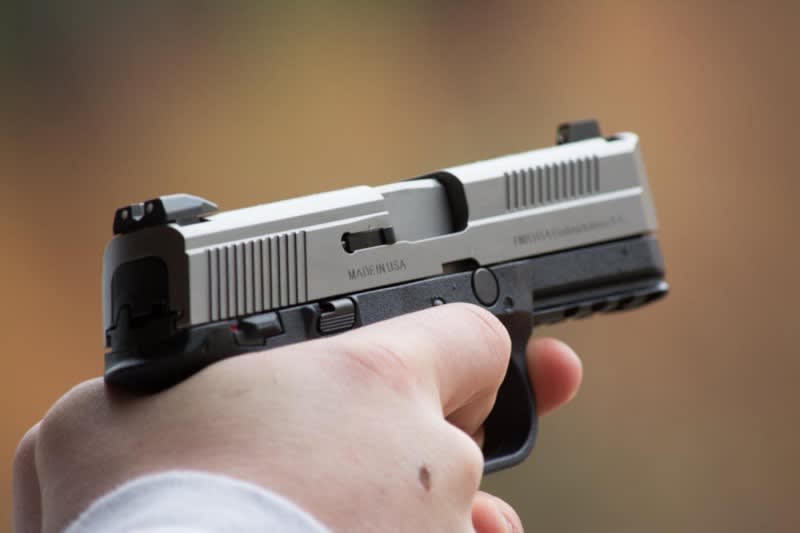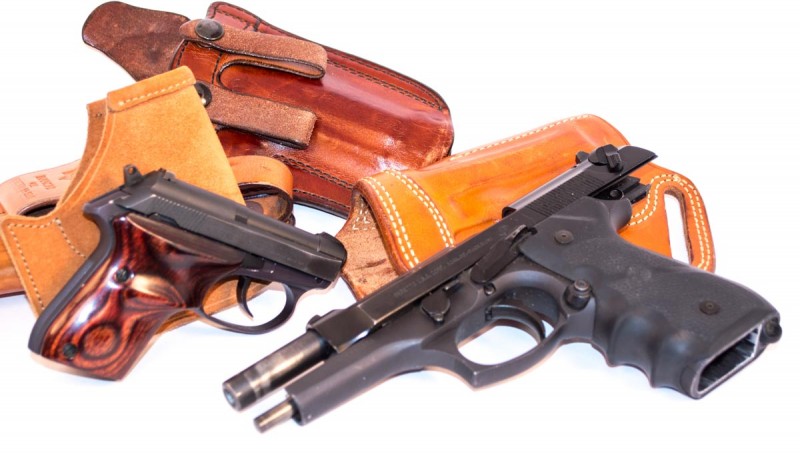Concealed Carry Myths: That Caliber Has Too Much Recoil!
Tom McHale 07.07.15

“I like my .380 because it hardly kicks.”
“I hate my .380 compact because it kicks like an ill-tempered donkey.”
“I don’t want a .40 S&W because the recoil is too much for me.”
“My .40 S&W is the softest shooting gun; I love it!”
“9mm is the way to go because the recoil is manageable.”
“I just bought a new 9mm and I hate how it recoils…”
The funny thing about all these statements is that they’re all true. Judging the recoil of a caliber is 50 percent science, 50 percent opinion, and 112 percent voodoo. That’s because some of the components of recoil can be broken down into numbers that mean specific things if you like physics. Other components of recoil are purely subjective. And some factors are dependent upon our particular build and the shape and meatiness of our hands.
What makes recoil?
We treat the concept of “kick” of a handgun subjectively and make plenty of assumptions. People assume that a .380 ACP doesn’t recoil, a 9x19mm has light recoil, and anything else feels like swinging a baseball bat at a brick wall while holding it with your teeth.
In reality, while caliber certainly has much to do with the amount of recoil, there are plenty of other factors at play. Factors that determine how much recoil you feel include the mass of the bullet, the mass of the powder charge inside the cartridge, the velocity of the bullet and escaping gas, and the mass of the gun. The forward movement of the projectile, burning powder, and hot gasses at a certain velocity represent forward momentum. This must be exactly balanced by momentum of the gun moving back towards the shooter. Because Newton and his 3rd Law of Science and Physics and Stuff. The momentum over a period of time is the excitement you feel that we lovingly call recoil.

Some fancy math with those variables (bullet and powder weight, velocity, and gun weight) will tell us the number of foot-pounds of energy of recoil. You can think of the “foot-pounds” measure as an amount of force through a specific distance. One foot-pound is a measure of “oomph” required to move a one pound object through a distance of one foot, discounting things like friction. As we’ll touch on later, don’t get too hung up on trying to compare felt recoil of various handgun and cartridge combinations just based on the foot-pound of free energy numbers. That’s only part of the picture.
Some actual recoil energy numbers…
Earlier I said that a number of contradictory statements could all be true. Here’s the short version of why that is. You can shoot any caliber cartridge through a small and light gun or a large and heavy gun. Firing a .380 ACP through a large pistol can feel supremely tame, while the same cartridge fired from a pocket pistol weighing in the single digits of ounces can be a monster. Let’s consider a few actual examples to illustrate the point. For these examples, I’m using my own reloading data because I know the powder weights of various cartridges. Normally, factory ammunition doesn’t indicate the specifics of the powder charge inside.
.380 ACP: Ruger LCP and Beretta Cheetah
The little pocket Ruger LCP weighs just 9.7 ounces empty, or about 0.6 pounds. For our example, let’s consider a 90-grain .380 ACP projectile, moving at 980 feet per second. This is in the “average” range of .380 factory ammo. The free recoil energy works out to 5.59 foot-pounds.
On the larger side of .380 ACP handguns is the Beretta Cheetah. The model 84 weighs 23 ounces empty. Firing the same bullet through that pistol yields just 2.36 foot-pounds of recoil energy.
9x19mm: Smith & Wesson Shield and Sig Sauer P226
Shooting a 115-grain bullet propelled by 5.8 grains of powder at 1,233 feet per second from the 19-ounce Smith & Wesson Shield in 9x19mm yields 7.26 foot-pounds of recoil energy. Firing the same projectile from a full-size Sig Sauer P226, weighing in at 34.4 ounces, produces just 4.01 foot-pounds of recoil energy, somewhat less than a .380 ACP fired from a smaller and lighter gun.
Just to jump to a caliber that frightens away many newer shooters, a 230-grain .45 ACP bullet fired from a Smith & Wesson SW1911 eSeries pistol produces only 6.51 foot-pounds. We could go on all day with numbers like this, but again, they are just part of the equation. I mention them here to illustrate the point that a larger caliber might not feel as onerous as you might think. It all depends on the gun you use and your technique. The energy part can be surprisingly similar to smaller calibers fired from smaller guns.
Why does a larger gun recoil less?
Bigger guns are easier to shoot, assuming your hands can fit around the grip properly, for a couple of different reasons. First, bigger guns are heavier, and weight of the gun is a direct input to the recoil energy equation. More weight translates to fewer free recoil foot-pounds of energy hitting your hand, all else being equal.
There’s another reason larger guns feel like they recoil less, and “feel” is the key word here. A larger grip usually means more surface area to which your hand parts can make contact. The more contact, the gentler recoil feels. As an extreme example, imagine shooting a 9x19mm pistol just using your thumb, trigger finger, and middle finger. There are no other points of contact. When the gun fires, you’ll know it. It’ll jump, move, and flail all around. Your few finger points of contact will not be happy. Now imagine shooting the same gun, with a perfectly shaped grip that perfectly fits every contour of your fingers and palm. That will feel a heck of a lot more comfortable, I guarantee it. The extra surface area helps you control the gun and provides more surface for dissipation of the recoil energy.
It’s not quite that simple, though
In the interest of time, space, and risk of putting you to sleep, we’ve only really talked about free recoil energy, measured in foot-pounds. While it’s an incomplete picture, it serves to show some interesting relative differences for different ammo types fired from different guns. When you get into the nitty gritty, you have to start considering things like recoil impulse, which takes into account the speed at which the entire recoil commotion interferes with your grip. That’s part of the reason shooters describe some gun and caliber combinations as “snappy” versus more of a “push.” But that’s for another day.
The bottom line is don’t make assumptions about the recoil of a given caliber without considering the gun that will be firing it. Weight and fit of the gun have a lot to do with how much recoil you feel.
Tom McHale is the author of the Insanely Practical Guides book series that guides new and experienced shooters alike in a fun, approachable, and practical way. His books are available in print and eBook format on Amazon.

